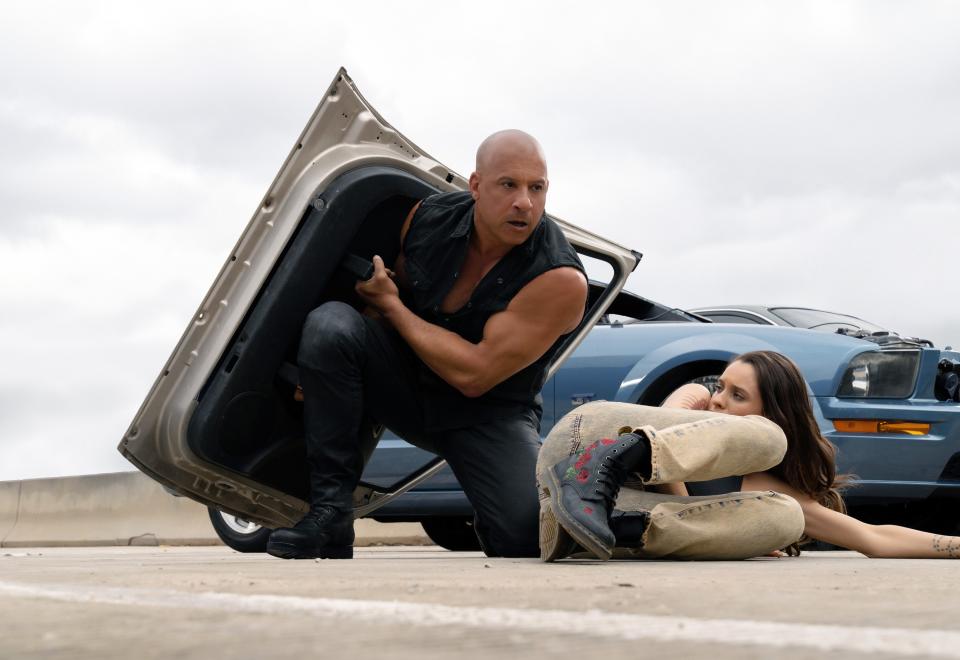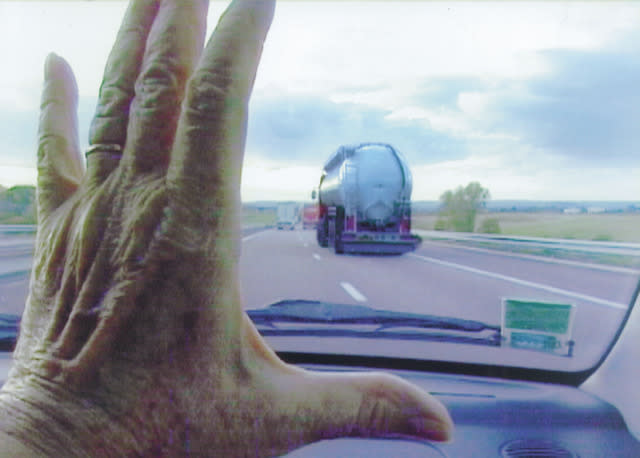All the French New Wave Directors Are Dead — Long Live Their Legacy

- Oops!Something went wrong.Please try again later.
- Oops!Something went wrong.Please try again later.
- Oops!Something went wrong.Please try again later.
Kohn’s Corner is a weekly column about the challenges and opportunities of sustaining American film culture.
Chances are that if you care about international cinema, you care about the French New Wave. A loose collective of young directors who came to define their country’s cinema as the 1950s gave way to the ’60s, the French New Wave gave cinema permission to be audacious and uncompromising while bolstering its style and personality. It was cool with purpose.
More from IndieWire
Why Does Ezra Miller Get a 'Flash' Pass, but Not Woody Allen or Roman Polanski?
'Spider-Man: Across the Spider-Verse' Hints at the Future of Creativity Well Beyond Hollywood
Jacques Rozier, the last living member of the Nouvelle Vague, died this week at 96. Rozier was a blind spot for me (I did see his 1962 debut “Adieu Philippine,” a playful romance set against the French-Algerian war, in college), but the French New Wave was my guide to grasping what the movies could be.
As a teenager, Jean-Luc Godard’s “Breathless” got me excited about the possibilities of the movies like nothing that came before. Francois Truffaut’s “The 400 Blows” was a formative encounter with the expansive possibilities of the coming-of-age story. Agnes Varda’s “Cleo From 5 to 7” magnified the role of time in cinematic storytelling. Alain Resnais’ “Last Year at Marienbad” proved that movies don’t have to explain themselves to you — the enigma can be one with the art.
The French New Wave and the lively personalities surrounding it represented so many creative pathways to keeping the movies alive as an art form. It’s even more remarkable that many of its directors continued to create vibrant, challenging work for decades, some well into their 90s. The world changed in major ways and so did the role of movies within it, but it was comforting to know that some semblance of the French New Wave was still with us.
To a degree, that remains true. We still have “The 400 Blows” child actor Jean-Pierre Léaud (who, at 79, hasn’t starred in a movie since 2016’s astonishing “The Death of Louis XIV”), and a few directors who were French New Wave-adjacent: 75-year-old Philippe Garrel, 85-year-old Claude Lelouch, and Luc Moullet, also 85, who started later and only directed a few films. By and large, though, the legacy of the New Wave is exclusively one for the history books.
Since most of us didn’t have a personal relationship with the movement’s contributors, this is an illusory turning point. Its legacy extends well beyond individuals: the French New Wave proved it was possible to create movies with power and purpose regardless of what the market demanded of the form.
For that reason, any filmmaker could benefit from taking a closer look at the patterns behind the French New Wave that led to the creation of timeless work — and American directors in particular could benefit Here are some of my takeaways and I encourage readers who share my enthusiasm for this legendary crowd of filmmakers to share their own: eric@indiewire.com
Learn to write about other people’s work
Many of its original participants got their start in film criticism. Cahiers du Cinema (which, over the course of changing ownership a few times, has sadly lost its cultural relevance today) became a key platform for Godard, Truffaut, Jacques Rivette, and others to write in sharp, eloquent ways about the movies, many of which were seen at Henri Langlois’ Cinematheque Francaise.
“To look around oneself is to live free,” Godard wrote in Cahiers du Cinema in the late 1950s. “So the cinema, which reproduces life, must film characters who look around them.” He was referring to Alfred Hitchcock’s work, but Godard would take that perspective in another direction with his own array of iconoclastic creations in his early hits — misfits and rebels in movies like “Breathless” and “Pierrot le Fou” who grew tired of restrictions and broke the rules to liberate themselves. Godard’s filmmaking mimicked these concerns by breaking down the traditional rules of storytelling, with fragmentary moments, fourth-wall-breaking pranks, and other devices.
How many filmmakers working today can clarify their relationship to movies with such precision?
Forget about length
At a certain point in the history of the feature-length film, a range of practicalities led to the assumption that movies should run around 90-120 minutes. These days, Hollywood product pushes those boundaries with two-and-half-hour behemoths dominating the multiplexes. These movies don’t demand heft; the system has been rigged to deliver massive CGI spectacles to attract audiences for a robust experience, which translates into duration. It’s usually a shocker when a Hollywood movie doesn’t overstay its welcome: “Fast X” is two hours and 21 minutes, “Transformers: Rise of the Beasts” is two hours and 12 minutes, and so on.

French New Wave cinema is extremely variable. These directors created innovative storytelling methodology and the duration to become organic to the process. Rivette’s “Out 1” clocked in at 13 hours in multiple installments, anticipating the runtime flexibility of the streaming era by decades; his metaphysical comedy “Celine and Julie Go Boating” runs three hours and 12 minutes, but it’s a total breezy delight. Meanwhile, Alain Resnais’ Holocaust meditation “Night and Fog” runs 32 minutes and is one of his most beloved works; the same applies to Chris Marker’s innovative 28-minute dystopian time-travel drama “La Jetée.”
Some of today’s master filmmakers grasp this logic. This week, I broke the news that Wes Anderson had adapted Roald Dahl’s “The Wonderful Story of Henry Sugar” as a short film for Netflix that clocks in at under 40 minutes. Pedro Almodovar’s Cannes-acclaimed gay Western “Strange Way of Life” is around that same runtime. Both works are designed to reflect the concision of their concepts: a short character study and a mood piece. Meanwhile, Martin Scorsese lets “Killers of the Flower Moon” run three hours and 24 minutes because it suits the scope of the time-spanning narrative he set out to make. By and large, however, today’s filmmaking doesn’t think in terms of innovation when it comes to duration.
Keep it cheap (or reasonable)
Varda made her first feature, rural marriage drama “La Pointe Courte,” for a whopping $14,000. That’s about $153,000 in 2023 dollars — a helluva lot less than most midrange features today. How did she do it? Loans from friends. That’s not a business model, but she kept the costs low enough to get away with it and shot on location with mostly nonprofessional actors. The movie doesn’t suffer one bit from the boundaries of its sources, and the same could be said for “Breathless” or even “Marienbad,” which took advantage of on-location shooting at palaces in Germany for some of its most dramatic exterior imagery. (At $500,000, it was one of the costlier New Wave endeavors.)
Poke around and you’ll find few examples of New Wave movies that demanded more than production resources could provide. These filmmakers treated boundaries as a strength. For years I have argued that aren’t dying; they’re just getting smaller. In fact, smallness has informed some of the most exciting cinematic achievements throughout history.
Unpack film history through filmmaking
One of the more fascinating aspects of the French New Wave is how filmmakers were inspired by years of Hollywood cinema unavailable during WWII. After American cultural products were allowed back into the country in 1946, a generation of cinephiles found themselves inspired by the world’s most prolific and costly film industry through the prism of their own cultural and artistic sensibilities. This created movies that engaged in a constant dialogue with Hollywood cinematic genres and themes, even as it forged new creative territory.
Years later, Quentin Tarantino would become the king of fusing cinephilia with filmmaking (and tip his hat to the French New Wave through the name of his production company, A Band Apart). The soul of Ingmar Bergman is apparent in the work of Ari Aster. By and large, however, American filmmakers don’t seem to wrestle with filmmaking approaches made beyond their own borders. The result is a system doomed to imitate itself to death — and overdue for a resurrection.
Keep reinventing yourself

While it may seem like a ’60s phenomenon, the French New Wave continued well into the early aughts when the digital revolution suited the needs of directors who strongly felt the need to reinvent themselves. Godard’s video experiments allowed him to constantly push the medium in new directions (including some of the most thrilling applications of 3D to date), while Varda essentially transformed herself into a brand of personal documentary storytelling with “The Gleaners and I” (which her daughter is now turning into an educational platform). These achievements prove that artists can benefit from avoiding even their own formulas, evaluating the opportunities of their environments, and creating vibrant work well past any presumed expiration date.
Last week’s column, which addressed the disconnect that enables Ezra Miller’s “The Flash” to get released while Woody Allen and Roman Polanski movies can’t, understandably elicited some strong responses from readers. Here are excerpts from a few of them.
“It’s not about whether or not the movie is good and whether or not it should be delivered to the audience who might want it. The men who have benefited from a system created by men and favorable to men have been able to do so because we lined their pockets by appreciating their art and putting our money where our mouths were. But the men proved to be far from deserving of that appreciation, respect and, regrettably for us all, the social status they achieved thanks to the audience. They not only misused it but used it to do incorrigible things. So just as we strip the medal off a soldier who did wrong, we must refuse the art of these individuals. Those who want to see these movies can work hard and find them. And if they can’t, I can’t pretend to be sad for them.”
“Absolutely correct, sir. Warner was not about to throw $400-$500 million in the trash. That would cover a dozen Polanski and Allen films. Considering their rampage of cost-cutting, I expected them to take the loss as a huge write-off, but the studio desperately needs a success, so here we are.”
“I can’t believe you’re comparing those two dirty old men with a young man who, while certainly culpable for his actions, is also very obviously mentally ill.” [Editor’s Note: Miller identifies as non-binary.]
“Polanski is indeed guilty of a crime. He has always acknowledged that he had unlawful intercourse with a teenage girl. He pleaded guilty. On the other hand, there has NEVER been any evidence that Woody Allen committed a crime. He has always denied it. He was never charged. I request that you rephrase this statement. An HBO documentary is not evidence.”
Best of IndieWire
Where to Watch This Week's New Movies, from 'Asteroid City' to 'The Flash'
Wes Anderson Movies, Ranked: 'Bottle Rocket' to 'Asteroid City'
Sign up for Indiewire's Newsletter. For the latest news, follow us on Facebook, Twitter, and Instagram.

